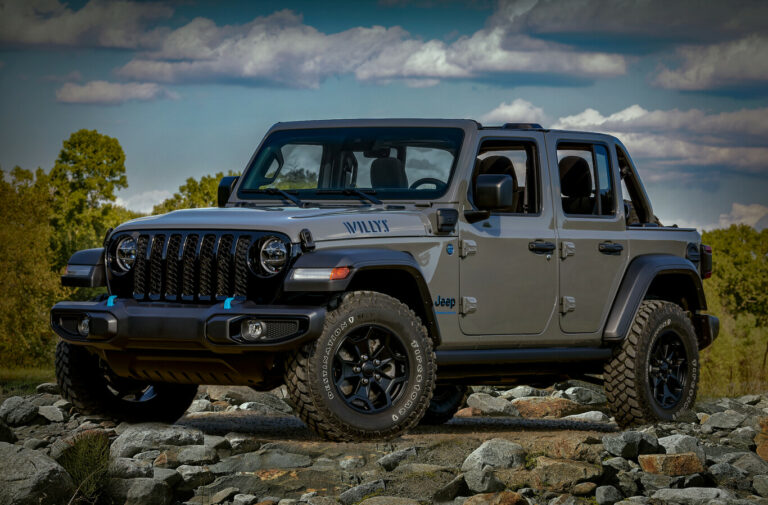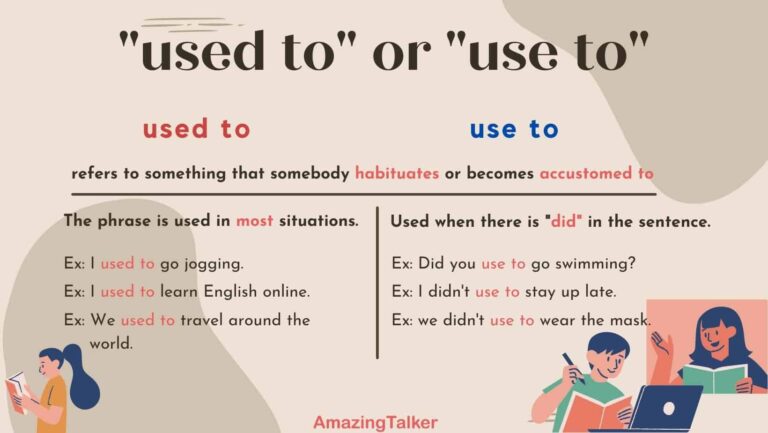2012 Jeep Grand Cherokee Lifted: Elevating Your WK2 for Adventure
2012 Jeep Grand Cherokee Lifted: Elevating Your WK2 for Adventure jeeps.truckstrend.com
The 2012 Jeep Grand Cherokee (WK2 generation) stands as a testament to American engineering, blending rugged capability with refined comfort. While highly capable in its stock form, many enthusiasts seek to unlock its full potential, both aesthetically and functionally, by lifting it. Lifting a 2012 Jeep Grand Cherokee involves modifying its suspension to increase ground clearance, allowing for larger tires, improved off-road performance, and a more aggressive stance. This comprehensive guide will delve into everything you need to know about transforming your WK2 into an even more formidable machine.
Why Lift Your 2012 Grand Cherokee? Unlocking Its True Potential
2012 Jeep Grand Cherokee Lifted: Elevating Your WK2 for Adventure
Lifting a 2012 Grand Cherokee isn’t just about making it look tougher; it offers a multitude of practical benefits for both on-road presence and off-road prowess:
- Increased Ground Clearance: This is the primary benefit, allowing you to clear obstacles like rocks, logs, and deep ruts without damaging the undercarriage. Crucial for challenging trails.
- Ability to Fit Larger Tires: More ground clearance means space for bigger tires, which in turn provides better traction, more aggressive tread patterns, and often a larger contact patch for off-road grip.
- Improved Off-Road Geometry: A lift enhances crucial angles:
- Approach Angle: The maximum angle an obstacle can have before the front of the vehicle hits it.
- Departure Angle: The maximum angle an obstacle can have before the rear of the vehicle hits it.
- Breakover Angle: The maximum angle an obstacle can have between the front and rear wheels before the undercarriage contacts it.

- Enhanced Aesthetics: Let’s be honest, a lifted Grand Cherokee looks undeniably more aggressive, capable, and commanding on the road. It transforms its appearance from a comfortable SUV to a true off-road contender.
- Better Articulation (with proper kits): Some lift kits, particularly those that replace full suspension components, can allow for greater wheel travel and articulation, keeping more tires on the ground over uneven terrain.

Understanding Lift Kit Types for the WK2 Grand Cherokee
The WK2 Grand Cherokee’s independent front and rear suspension (IFS/IRS) design requires specific considerations when lifting. Here are the common types of lift kits available:
-
Spacer Lifts (Leveling Kits/Budget Boosts):

- What they are: These are typically inexpensive spacers made of aluminum, polyurethane, or steel that are installed above or below your factory coil springs or struts. They essentially "push down" the suspension.
- Pros: Most affordable, relatively easy to install (DIY friendly), maintains factory ride quality (as original springs/shocks are retained).
- Cons: Does not improve suspension travel or performance, limited to smaller lifts (1-2.5 inches), can cause premature wear on factory shocks if pushed too far.
- Best for: Achieving a level stance, fitting slightly larger tires, or light off-roading.
-
Coil Spring Lifts:
- What they are: This involves replacing your factory coil springs with taller, often stiffer, aftermarket coil springs. Many kits also include new, longer shocks designed to accommodate the increased travel.
- Pros: Improves suspension performance, allows for greater wheel travel than spacers, offers better ride quality over rough terrain (depending on shock choice), available in various lift heights (2-4 inches).
- Cons: More expensive than spacers, more complex installation, ride quality can be firmer than stock.
- Best for: Moderate off-roading, better articulation, and a noticeable performance improvement.
-
Coilover Lifts (Premium Performance):
- What they are: These are integrated spring and shock units where the coil spring is mounted directly over the shock absorber. They are highly adjustable (ride height, damping, rebound) and often feature remote reservoirs for better heat dissipation.
- Pros: Best performance, superior ride quality, highly tunable for specific needs (rock crawling, desert racing), maximum wheel travel and articulation.
- Cons: Most expensive option by far, complex installation and tuning, often requires additional supporting modifications (e.g., upper control arms).
- Best for: Serious off-road enthusiasts, competitive use, or those seeking the absolute best performance and adjustability.
-
Air Suspension Lifts (for Quadra-Lift equipped WK2s):
- What they are: If your 2012 Grand Cherokee came with the factory Quadra-Lift air suspension, you can "lift" it using either extended sensor links or an electronic module. These trick the system into thinking the vehicle is lower than it is, causing it to inflate the air springs more.
- Pros: Retains factory air ride comfort, adjustable height on the fly (via factory controls), relatively easy installation for links/modules.
- Cons: Doesn’t increase actual suspension travel, relies on the factory air system (potential for leaks/failures over time), can put more stress on air components, expensive if the factory system fails.
- Best for: Maintaining factory ride comfort while gaining some additional clearance, or for those who don’t want to replace their existing air suspension.
Key Considerations Before Lifting Your 2012 WK2
Before you commit to a lift, it’s crucial to understand the implications and plan accordingly:
- Desired Lift Height vs. Tire Size:
- 2-2.5 inches: Often allows for 32-inch tires (e.g., 275/55R20 or 275/60R18) with minimal or no trimming. This is a popular "sweet spot" for aesthetics and mild off-roading.
- 3 inches: Can accommodate 33-inch tires (e.g., 285/65R18 or 275/65R20), but often requires fender liner trimming, pinch weld modification, or specific wheel offsets.
- 4+ inches: Typically requires extensive modifications (new upper/lower control arms, driveshaft modifications, significant trimming) and is usually reserved for serious off-road builds.
- Cost vs. Performance: Define your budget and your off-road aspirations. A $300 spacer lift will yield vastly different results than a $3,000+ coilover system.
- Installation Complexity: Spacer lifts can often be installed by a mechanically inclined DIYer. Coil spring and coilover kits usually require specialized tools (spring compressors) and expertise, making professional installation advisable.
- Ride Quality Impact: Spacer lifts generally retain stock ride. Coil spring kits can vary from softer than stock to much firmer, depending on spring rates and shock valving. Coilover kits offer the most control.
- Alignment & Driveline Angles: Crucial! Any lift will alter your vehicle’s suspension geometry. A professional alignment is mandatory immediately after installation to prevent premature tire wear and handling issues. Taller lifts (3+ inches) may require adjustable control arms or other components to correct camber, caster, and pinion angles to prevent driveline vibrations.
- Legalities: Check local laws regarding vehicle height modifications.
- Warranty Implications: Lifting your vehicle, especially with aftermarket components, can potentially void parts of your factory powertrain or suspension warranty. Consult your dealership.
The Installation Process (General Guide)
While specific steps vary by kit, the general process for installing a lift kit on a 2012 Grand Cherokee involves:
- Preparation: Safely lift the vehicle and support it on jack stands. Remove wheels.
- Disassembly: Disconnect sway bar links, brake lines (if necessary), and remove the lower shock/strut bolts. Carefully decompress and remove the factory coil springs or complete strut assemblies.
- Installation: Install new components according to kit instructions:
- Spacers: Place spacers above or below existing springs/struts.
- Coil Springs: Install new, longer coil springs, often with new shocks.
- Coilovers: Install the complete coilover units.
- Reassembly: Reconnect all components, ensuring proper torque on all bolts.
- Post-Installation: Lower the vehicle, torque lug nuts, and immediately drive to a reputable alignment shop.
Important Note: This is a simplified overview. Suspension work can be dangerous due to compressed springs and heavy components. If you’re not experienced, professional installation is highly recommended.
Post-Lift Essentials and Maintenance
Your work isn’t done after the lift kit is installed:
- Professional Alignment: This is non-negotiable. Get a 4-wheel alignment immediately.
- Check for Rubbing: Drive your Jeep, turning the wheel full lock in both directions, and articulate the suspension (e.g., over a curb) to check for tire rubbing on fender liners, frame, or suspension components. Trim as needed.
- Driveline Vibration Check: Pay attention to any new vibrations, especially at highway speeds. This could indicate incorrect driveline angles requiring further modification (e.g., pinion angle correction).
- Regular Inspection: Periodically check all suspension components, bolts, and bushings for wear, looseness, or damage.
- Tire Care: Rotate and balance your larger tires regularly to ensure even wear.
Potential Challenges and Solutions
Lifting a vehicle can introduce new challenges, but most have solutions:
- Challenge: Driveline Vibrations:
- Solution: For WK2s, this is less common with modest lifts due to the IFS/IRS, but can occur with extreme lifts. Solutions include adjusting pinion angles (if possible), correcting control arm lengths, or in rare cases, custom driveshafts.
- Challenge: Reduced Ride Quality:
- Solution: If using spacers, you’re stuck with stock ride. For coil kits, choose shocks and springs designed for your desired ride. Adjustable coilovers offer the most tuning.
- Challenge: Tire Rubbing:
- Solution: Fender liner trimming, "pinch weld" modification, adjusting wheel offset, or using wheel spacers (though spacers have their own pros/cons).
- Challenge: Increased Wear on Steering/Suspension Components:
- Solution: Larger tires and increased angles can put more stress on ball joints, tie rods, and bushings. Consider upgrading to heavy-duty aftermarket components. Regular maintenance and inspection are key.
- Challenge: Alignment Issues:
- Solution: A professional alignment shop with experience in lifted vehicles is crucial. For higher lifts, adjustable upper control arms (UCAs) are often necessary to bring camber and caster back into specification.
Price Table: Estimated Costs for 2012 Jeep Grand Cherokee Lifted
Please note: These are estimated costs and can vary significantly based on brand, quality, location, labor rates, and specific vehicle condition. Always get multiple quotes.
| Component/Service | Estimated Cost (Kit/Parts Only) | Estimated Installation Cost (Labor) | Total Estimated Cost (Min-Max) | Notes |
|---|---|---|---|---|
| Spacer Lift Kit | $150 – $400 | $200 – $600 | $350 – $1,000 | Relatively simple install; maintains factory ride. |
| Coil Spring Lift Kit | $500 – $1,500 | $400 – $1,000 | $900 – $2,500 | Includes new springs & often shocks; improves performance. |
| Coilover Lift Kit | $1,500 – $4,000+ | $800 – $2,000+ | $2,300 – $6,000+ | Premium performance; highly adjustable. |
| Air Suspension Links/Module | $100 – $500 | $100 – $300 | $200 – $800 | For WK2s with factory Quadra-Lift; retains air ride. |
| Professional Alignment | N/A | $100 – $200 | $100 – $200 | MANDATORY after any lift to prevent tire wear and handling issues. |
| New Tires (Larger) | $800 – $2,000+ | (Mounting/Balancing usually extra) | $800 – $2,000+ | Essential for maximizing lift benefits; cost varies by size, brand, and type. |
| Upper Control Arms (UCAs) | $400 – $800 | $150 – $400 (if installed with lift) | $550 – $1,200 | Often needed for 3"+ lifts to correct alignment. |
| Wheel Spacers / New Wheels | $100 – $300 (spacers) / $800 – $2,000+ (wheels) | N/A | Varies | May be needed for tire clearance or desired stance. |
| Miscellaneous (Fluid, bolts, shop supplies) | $50 – $200 | N/A | $50 – $200 | Small, often overlooked costs. |
Frequently Asked Questions (FAQ) about Lifting a 2012 Jeep Grand Cherokee
Q1: How much lift can I realistically get on my 2012 Grand Cherokee (WK2)?
A1: Most enthusiasts go for 2-3 inches of lift. While higher lifts are possible, they require significant additional modifications (control arms, driveshafts, extensive trimming) and come with increased complexity and cost.
Q2: What’s the biggest tire I can run with a 2-inch lift?
A2: With a 2-inch lift, you can typically fit 32-inch tires (e.g., 275/55R20, 275/60R18, or 265/70R17) with minimal to no rubbing. For 33-inch tires, you’ll likely need 3 inches of lift and some fender liner trimming/pinch weld modification.
Q3: Do I need new shocks if I install a spacer lift?
A3: For smaller spacer lifts (up to 2 inches), you can often retain your factory shocks. However, for 2.5 inches or more, or if your factory shocks are old, it’s highly recommended to upgrade to longer, aftermarket shocks designed for the increased travel to prevent bottoming out and improve ride quality.
Q4: Will lifting my Grand Cherokee affect its gas mileage?
A4: Yes, almost certainly. Lifting increases aerodynamic drag, and larger, heavier, more aggressive tires significantly increase rolling resistance and unsprung weight. Expect a noticeable decrease in fuel economy.
Q5: Will lifting my WK2 void my factory warranty?
A5: It can. Generally, modifications to the suspension and drivetrain can void the warranty specifically for those components. If a failure occurs that can be directly attributed to the aftermarket lift, the dealer may deny coverage. It’s best to discuss with your dealership before making significant modifications.
Q6: Is an alignment necessary after lifting?
A6: Absolutely! A professional 4-wheel alignment is mandatory immediately after installing any lift kit. Lifting alters suspension geometry, and without proper alignment, you’ll experience premature tire wear, poor handling, and potentially dangerous driving characteristics.
Q7: Is it safe to lift my Grand Cherokee?
A7: When done correctly with quality components and professional installation (or competent DIY), lifting a Grand Cherokee can be safe. However, improper installation, poor quality parts, or neglecting post-lift necessities like alignment can compromise safety and vehicle longevity. Always prioritize safety and follow best practices.
Conclusion
Lifting your 2012 Jeep Grand Cherokee (WK2) is a fantastic way to enhance its off-road capability, accommodate larger tires, and give it an undeniably rugged aesthetic. From budget-friendly spacer lifts to high-performance coilover systems, there’s an option for nearly every need and wallet. However, it’s crucial to approach this modification with careful planning, understanding the different kit types, considering the potential challenges, and recognizing the importance of professional installation and post-lift maintenance. With the right approach, your lifted WK2 Grand Cherokee will not only turn heads but also confidently conquer trails, truly elevating your adventure.





